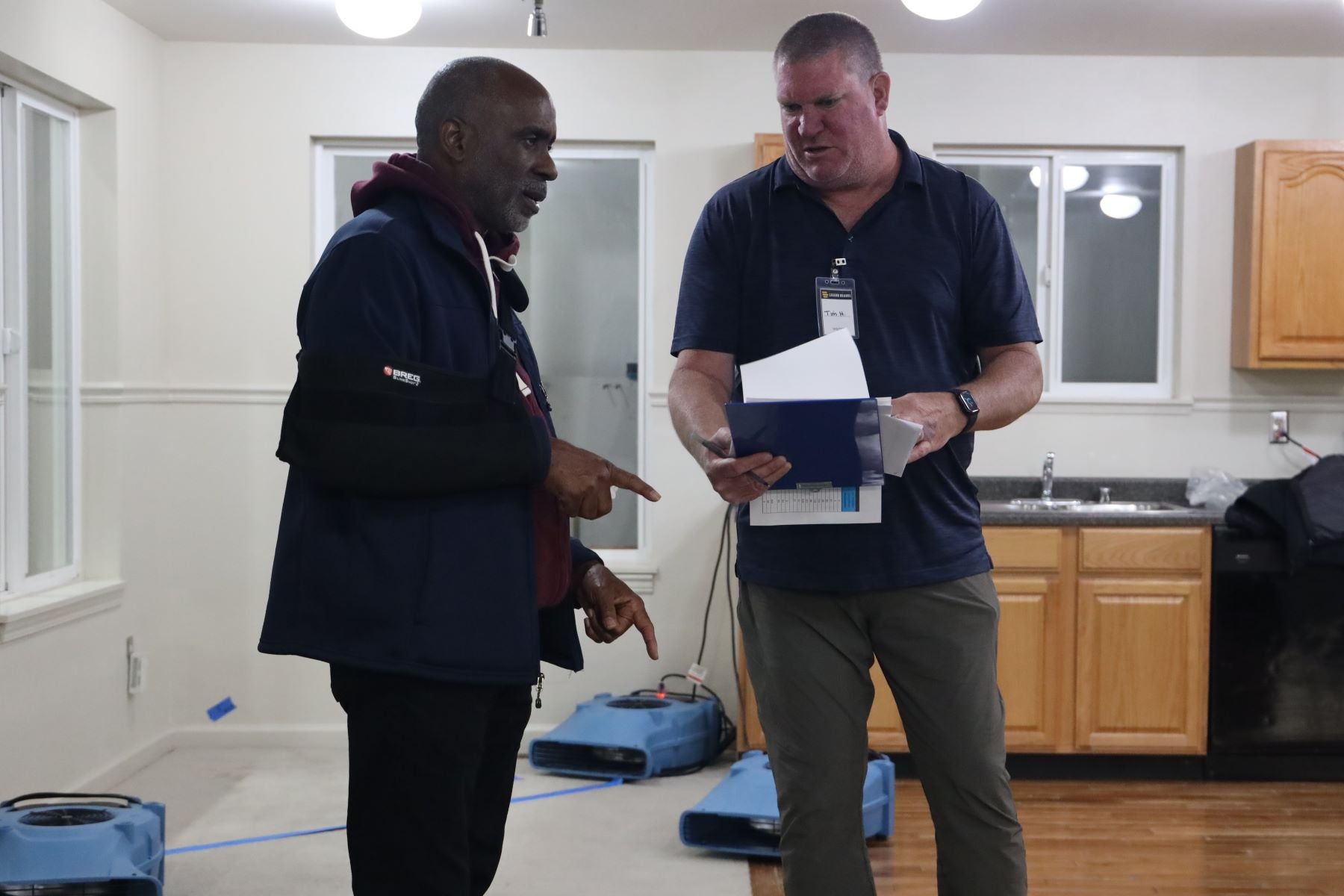By TJ Grim, Ready 2 Respond Trainer
In high-pressure situations, such as a water damage emergency, hesitation can cost time, money, and safety. But when facilities teams are trained, prepared, and confident in their response, they can move quickly – minimizing downtime and protecting people, property, and operations.
True readiness comes from experience, not just classroom instruction and watching videos. Realistic, hands-on training bridges that gap.
Simulations Build Understanding
With hands-on exercises, team members can experience a complete water damage scenario – placing drying equipment, measuring moisture levels, documenting progress, and making decisions under pressure. During this type of training, tasks that once felt complex become manageable.
Once they experience it in action, team members realize it’s not rocket science. For example, the math required to calculate drying equipment for a specific space is straightforward, and the process is easily learned.
More importantly, simulations reveal the system behind an effective response and help team members internalize it.
Why Hands-On Training Works
Training programs that simulate real-world water events offer benefits that go far beyond equipment know-how as they:
- Build team confidence – Once team members participate in the drying process, they recognize they’re capable of handling it and the new knowledge sticks.
- Promote accountability – Training assigns roles, utilizes sign-offs, and reinforces responsibility at every step, helping to eliminate guesswork during an actual emergency.
- Reinforce documentation – Participants learn to document clearly and consistently, a step that’s often overlooked even among seasoned professionals.
- Identify knowledge gaps – Whether it's using meters, equipment sizing, or drying strategies, training reveals what people know and what skills they need to learn.
- Strengthen communication – Everyone learns the same playbook, which improves coordination and reduces missteps under pressure.
- Build leadership capacity – Hands-on training empowers supervisors to return with the tools to teach and lead teams more effectively. It also equips trained team members to assist with on-the-job training as new workers join the staff.
Tailored Training for Every Team
No two facilities are alike, and neither are their emergency response needs. Whether managing a campus, healthcare system, or government building, simulation-based training should reflect the unique layout, infrastructure, and challenges of each site.
Effective training also accounts for varying experience levels. For some, that may mean walking through a complete drying scenario with actual equipment and a flooded structure. For others, it may begin with a tabletop exercise focused on communication and coordination.
Equally important is training the entire team, not just one shift or a handful of supervisors. Emergencies don’t wait for the right person to be on duty. Simulation training ensures every staff member knows their role, from setting up drying equipment to documenting moisture levels. The result: a confident, coordinated team ready to respond no matter who’s on site.
Stronger Teams, Faster Recoveries
One key takeaway: when leadership participates fully, even getting their hands dirty during simulation exercises, it shows the team that emergency preparedness is a priority. That kind of buy-in strengthens culture and boosts morale.
Everything else that facilities staff do – from HVAC maintenance to mowing and equipment repairs – has a system. The response to water damage should also be systematic. When teams understand this, their whole mindset shifts, and they feel more empowered.
Simulation training doesn't just build technical skills – it builds confidence, cohesion, and readiness. Team members walk away with a clear roadmap and the assurance that they can handle what comes next. Then, when the next water emergency hits, they won’t just respond – they’ll lead.
Contact the R2R team for assistance with a customized response plan that includes tailored training. For facility management tips, follow us on LinkedIn and subscribe to our Facility Insights newsletter.


How to Measure Emergency Preparedness
Preventing Water Damage: How to Spot Leaks Early